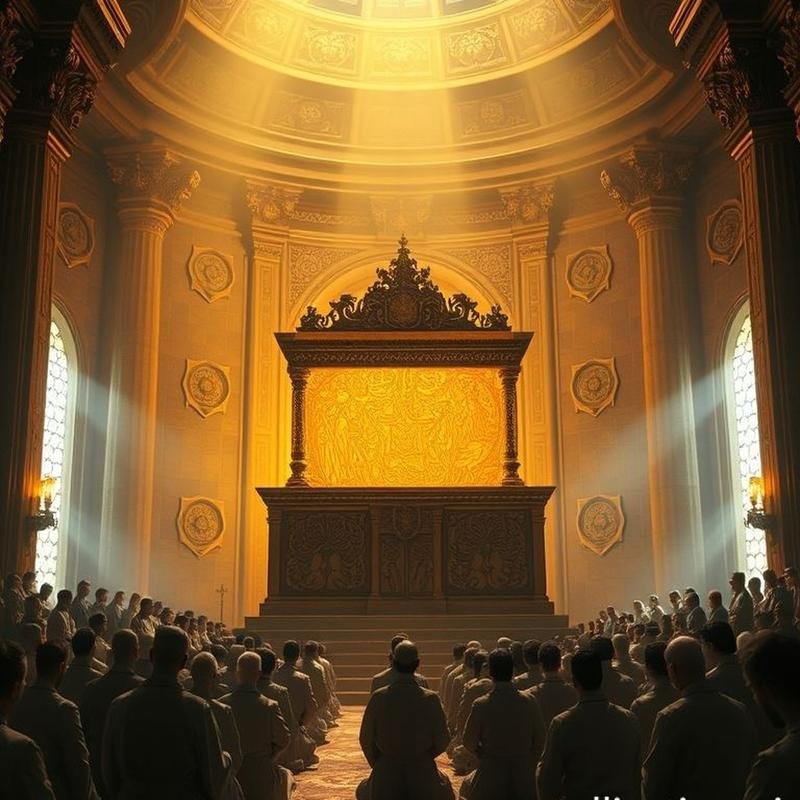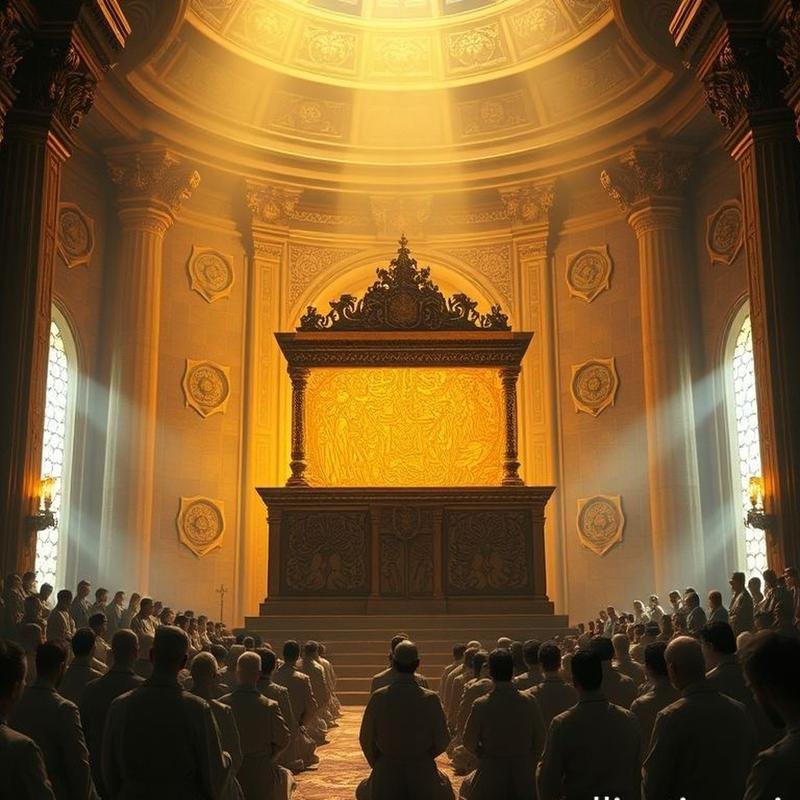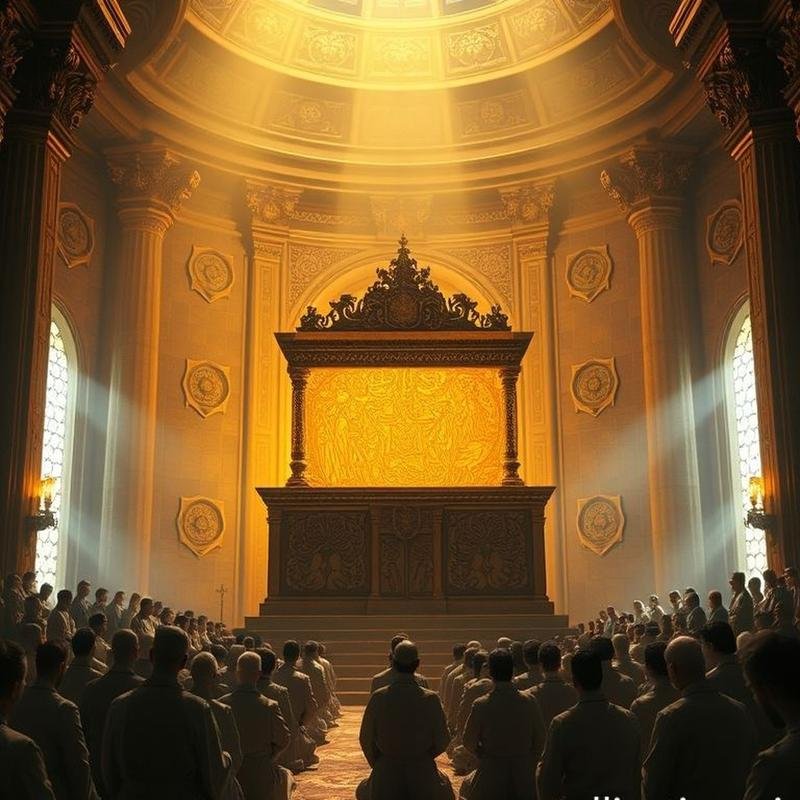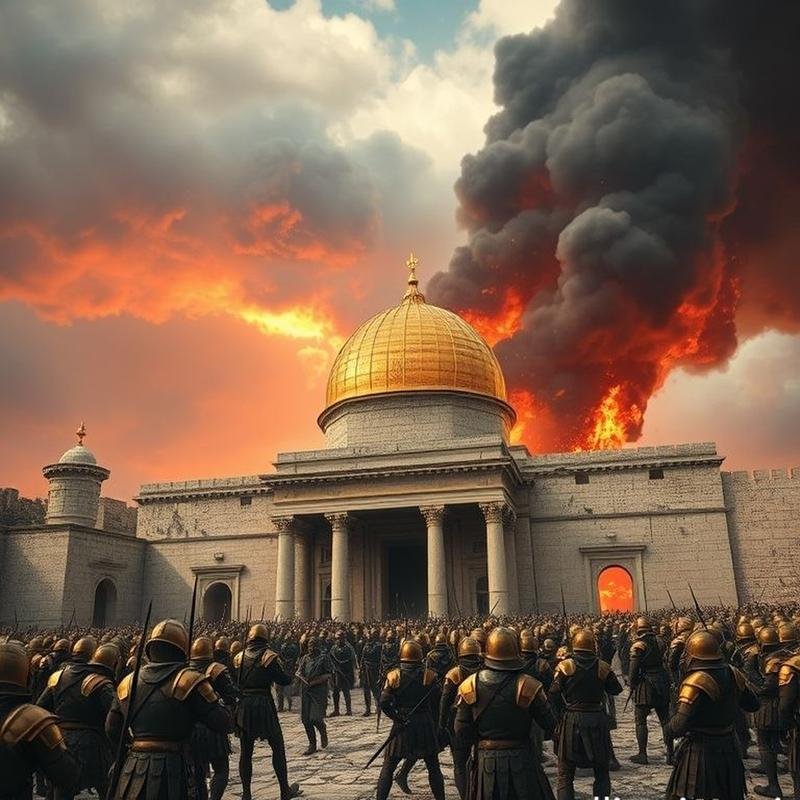The Lost Ark of the Covenant: Where Does History’s Most Sacred Secret Lie Hidden?

Lost Ark of the Covenant: Search for the Sacred Artifact
What secrets does the Ark of the Covenant truly hold, and why does the prospect of controlling it incite religious and political conflict? This compelling documentary embarks on an in-depth exploration of history and legend, endeavoring to distinguish verifiable archaeological facts from the pervasive speculation surrounding it. Our objective is to identify the most plausible present-day location of what is arguably the most sacred artifact in history. We will meticulously examine biblical, historical, and archaeological evidence, alongside less substantiated theories, to analyze potential locations. Could it be in Ethiopia? Concealed beneath the Temple Mount? Or perhaps lying dormant in the caves of Qumran? We will pay particular attention to the delicate balance between rigorous, evidence-based scientific inquiry and imaginative, albeit speculative, conjecture. Will we succeed in uncovering the elusive truth, or will we be overwhelmed by a turbulent sea of myths?
The Genesis of the Ark
Before embarking on our arduous quest to trace the evidence, let us return to the genesis of the Ark, to the momentous occasion when the Lord commanded Moses to construct it: “They shall make an ark of acacia wood; two and a half cubits shall be its length, a cubit and a half its width, and a cubit and a half its height.” These divine words precisely defined the dimensions of the sacred chest that would house the Ten Commandments. The Ark was not merely a box, but a sacred masterpiece. Overlayed with pure gold, both inside and out, it was surmounted by the Mercy Seat, the locus where, according to belief, the presence of the Lord would manifest. This very Ark, by direct divine command, would accompany the Israelites on their long and arduous journey through the desolate wilderness, preceding them in fierce battles, an invincible force shattering the might of their enemies and shaking the earth beneath their feet. Upon crossing the Jordan River, the waters miraculously parted, in reverence to the Ark carried by the consecrated priests. The Ark was a potent symbol of God’s presence among His chosen people, a protective shield guarding them from all harm, and a guiding light illuminating their path through the darkness of their wanderings.
The Ark’s Disappearance
Subsequently, the Ark found its permanent home in the Holy of Holies within the magnificent Temple of Solomon, the most sacred place on earth. Here, in the vibrant heart of the Temple, the Ark represented the spiritual nexus between heaven and earth, between God Almighty and His faithful people. However, this golden age was not to last. In the fateful year of 587 BC, the Babylonians conquered Jerusalem and destroyed the Temple. At this juncture, the biblical narrative concludes abruptly, with no mention of the fate of the sacred Ark. But does the story end there? Was the Ark lost forever in the obscure depths of history? The Bible remains silent, but what of other sources? Here, our journey begins to explore historical evidence beyond religious texts, in an attempt to ascertain whether there remains hope of its rediscovery.
Potential Locations and Theories
The Kebra Nagast, or the Glory of Kings, an ancient Ethiopian text, offers a compelling narrative: the Ark was not destroyed, but transported to Ethiopia with Menelik I, the purported son of King Solomon and the Queen of Sheba. Could Ethiopia be the faithful custodian of the Ark? And does this account withstand historical scrutiny? The Jewish historian Josephus Flavius mentions in *Antiquities of the Jews* that the Ark was present in the Second Temple, but this claim sparks considerable debate among scholars. Following the destruction of the First Temple, how did the Ark reappear? And was it the original Ark, or merely a replica? In another account, the Second Book of Maccabees recounts the story of the prophet Jeremiah, who hid the Ark in a cave on Mount Nebo prior to the Temple’s destruction. But where exactly is this cave located? And does the Ark remain there, awaiting discovery, or is this merely a legend? Even contemporary search efforts have yielded no conclusive results. The Montague Parker expedition, for example, explored tunnels beneath the Temple Mount in the early 20th century, but returned without success. Were they searching in the wrong location? Or is the Ark protected by an impenetrable force, whether physical or spiritual? The Dead Sea Scrolls, those ancient texts discovered in the caves of the Dead Sea, also raise pertinent questions. Do these scrolls contain coded references that reveal the Ark’s location? The possibilities are intriguing, but deciphering these codes is a formidable task requiring expertise and profound knowledge.
Archaeological Evidence and Discoveries
As painstaking excavations continue in the Temple Mount area of Jerusalem, direct physical evidence of the Ark’s existence remains elusive, but this absence does not preclude intriguing possibilities. In 2019, discoveries revealed a long tunnel extending beneath the Old City of Jerusalem, near the Western Wall. Could these secret passages or hidden chambers be connected to the First or Second Temple, and therefore hold a key to the long-awaited Ark? The mystery deepens with other discoveries. On Elephantine Island in Egypt, an ancient Jewish temple dating back to the 6th century BC was found, indicating the presence of a substantial Jewish community outside of Palestine. What religious practices did these Jews in distant Egypt observe? And did they have any connection to the sacred Ark? Elsewhere, archaeologist Yoni Mizrahi discovered an intriguing inscription on a pottery shard dating back to the 8th century BC, referring to the “House of Yahweh” at Khirbet Beit Lei. Could this be a reference to another temple besides the magnificent Temple in Jerusalem? And could it have served as a secure repository for sacred objects? The Tel Dan Stele, discovered in 1993, provides valuable archaeological evidence of the existence of the Kingdom of David and Solomon, which supports the historical context for the Ark’s existence. However, the challenge lies in interpreting these ancient artifacts and texts, as they can carry multiple meanings and are subject to varying interpretations, raising further questions. We cannot disregard the Ethiopian legends that link the Ark to the Queen of Sheba and the Ethiopian Empire, despite the lack of conclusive archaeological evidence to substantiate these compelling claims. Could the Ark be concealed somewhere in Ethiopia, awaiting revelation at a pivotal moment? The fundamental question remains: will future excavations reveal definitive evidence of the Ark’s existence, or will this captivating enigma remain perpetually shrouded in mystery, fueling our imagination and our quest for knowledge?
The Ethiopian Claim
Poised between founding myths and historical reality, Ethiopia stands as a sentinel, guarding a profound secret that resonates through time. The Ethiopian Orthodox Tewahedo Church, under strict guard for centuries, asserts that it possesses the authentic Ark of the Covenant, currently housed in the Church of Our Lady Mary of Zion in the holy city of Aksum. Here, within the confines of this sacred site, a celibate monk is chosen for life, dedicating his existence to guarding the Ark, a voluntary recluse committed to the sanctity of his noble mission. No one, not even the highest religious authorities, is ever permitted to view the Ark, save for this devoted guardian, lending this claim an enthralling aura of mystery and unwavering conviction. The origins of this ancient church date back to the illustrious 4th century AD, but it has been destroyed and rebuilt repeatedly throughout the ages, raising fundamental questions about the authenticity and true history of the place that purportedly houses the most sacred artifact in human history. According to Ethiopian traditions passed down through generations, King Menelik I, the legitimate son of King Solomon and the legendary Queen of Sheba, was the one who brought the Ark to Ethiopia, carrying with him an unparalleled royal and religious legacy.
The Vatican’s Secret Archives
From Ethiopia, our perilous journey leads towards the heart of the Vatican, where whispers of conspiracy reverberate within the walls of this holy city. Could the secret of the Ark of the Covenant be concealed within the Vatican Secret Archives, that vast repository of historical documents? This majestic archive extends over 85 kilometers of shelves filled with documents dating back to the 8th century. Established by order of Pope Paul V in 1612, it was formerly known as the Archivum Secretum Apostolicum, a name that evokes both curiosity and reverence. For decades, access to the treasures of this archive was severely restricted, with researchers prohibited from exploring documents predating 1939, ostensibly to protect sensitive information. But what secrets do these walls harbor? Letters from Michelangelo? Transcripts of the Knights Templar trials? Or perhaps, as some of the more audacious theories suggest, evidence of the Church’s concealment of information about Jesus Christ, or even the Ark itself? Despite its name, the term “secret” in the Vatican Secret Archives refers to its private nature with respect to the Pope, not necessarily its concealment from all. Nevertheless, this ambiguity, coupled with limited access, fuels rampant speculation. There is no conclusive evidence of the Ark’s presence here, but the question remains: could the Vatican be the faithful custodian of this most sacred secret?
Other Theories and Speculations
But what of those theories whispered in the back corridors of archaeology? Theories that venture beyond the Vatican’s vaults into more audacious realms? Here, we enter the domain of speculation, where faith intersects with interpretation, and evidence dissolves into a haze of possibilities. The caves of Qumran, for example, those that sheltered the precious Dead Sea Scrolls – could they have provided a temporary sanctuary for the Ark? Imagine that, while the world was rife with wars and conflicts, the Ark was hidden in the darkness, awaiting its moment of salvation. Then there is Mount Nebo, where Moses stood, the prophet who never set foot on the Promised Land. Did Jeremiah, as recorded in the Second Book of Maccabees, hide the Ark there, in a cave whose location remains unknown? Or perhaps Mount Pisgah nearby, an alternative to Nebo, in the realm of speculation about sacred sites. And let us not forget Ron Wyatt, the amateur archaeologist who claimed in the 1980s to have discovered the Ark in a cave beneath the Temple Mount. An intriguing narrative, to be sure, but one
Video Evidence








